博文
农科院和云师大合作通过基因组设计培育第一代杂交马铃薯
||

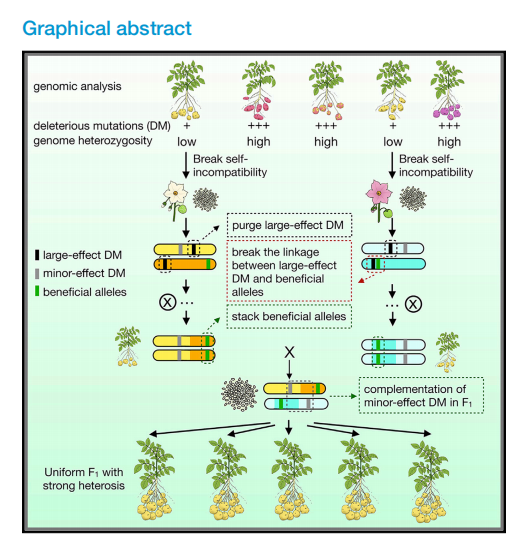
北京时间6月24日,《细胞(Cell)》在线发表了中国农业科学院深圳农业基因组研究所黄三文团队和云南师范大学马铃薯研究所研究团队合作发表题为“Genome design of hybrid potato(杂交马铃薯的基因组设计)”的研究成果。该研究是“优薯计划”实施以来取得的里程碑式突破。
全文链接:
![]() 1-s2.0-S0092867421007078-main.pdf
1-s2.0-S0092867421007078-main.pdf
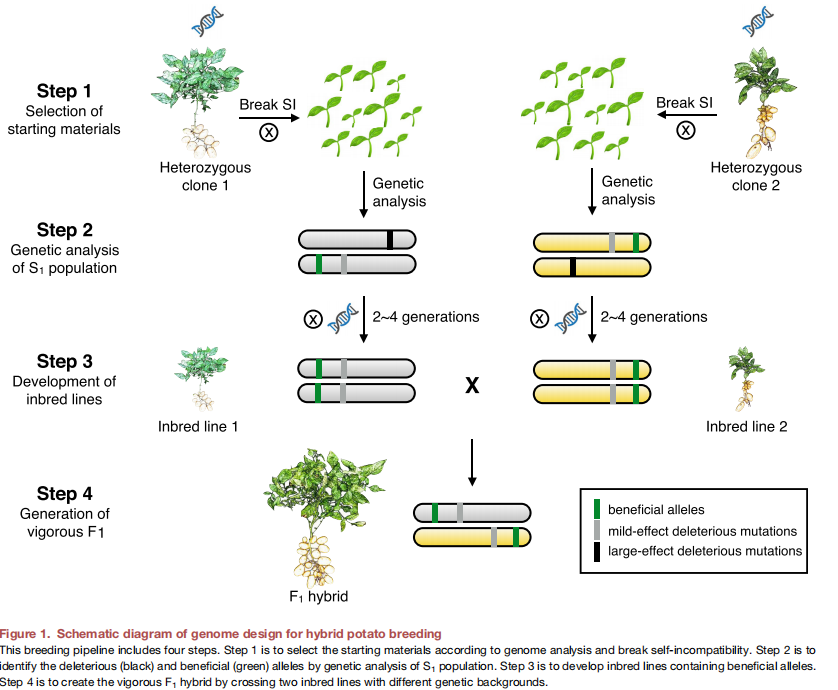
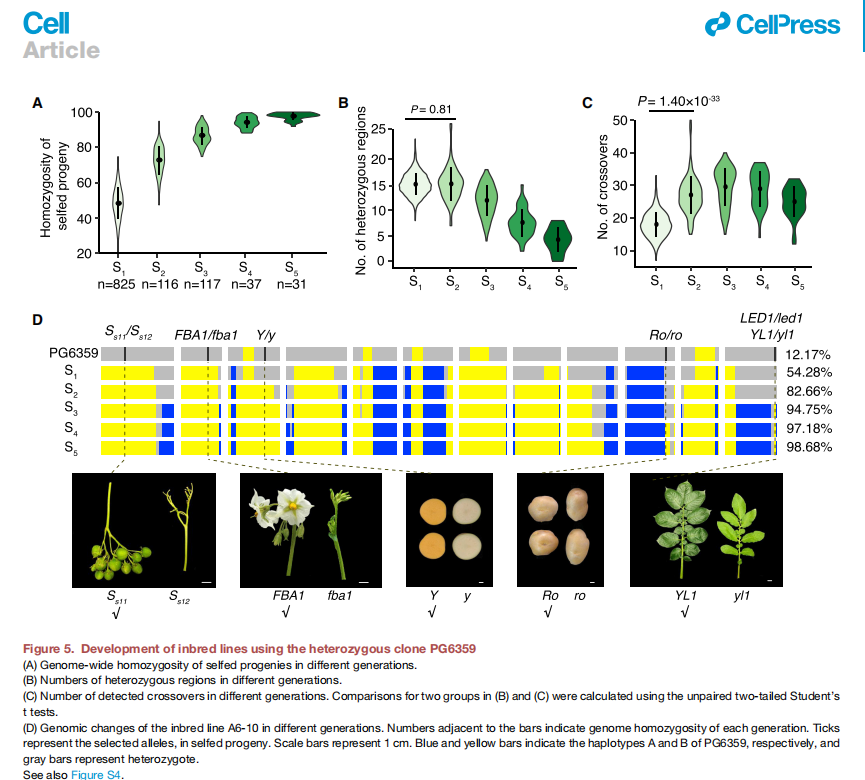
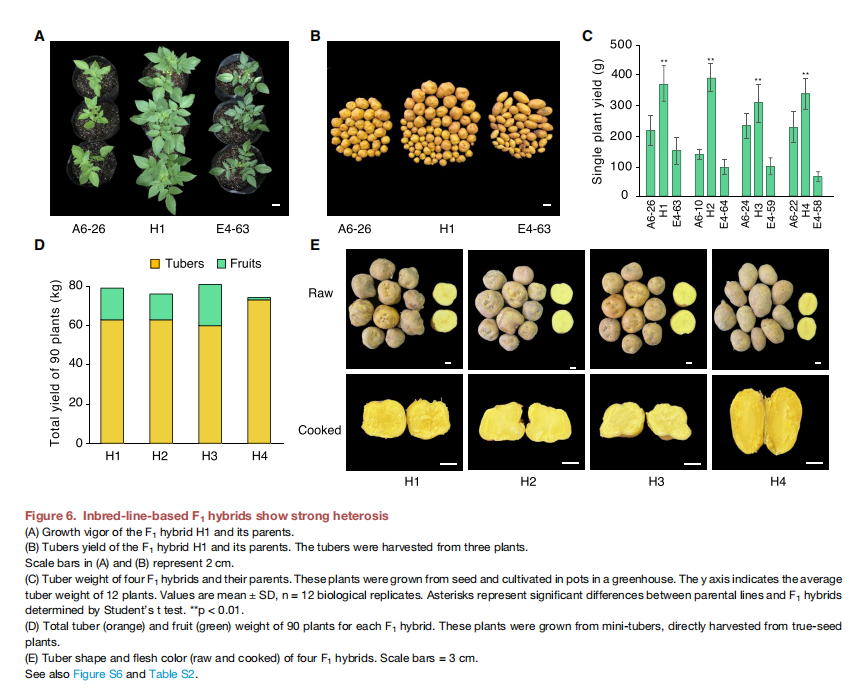
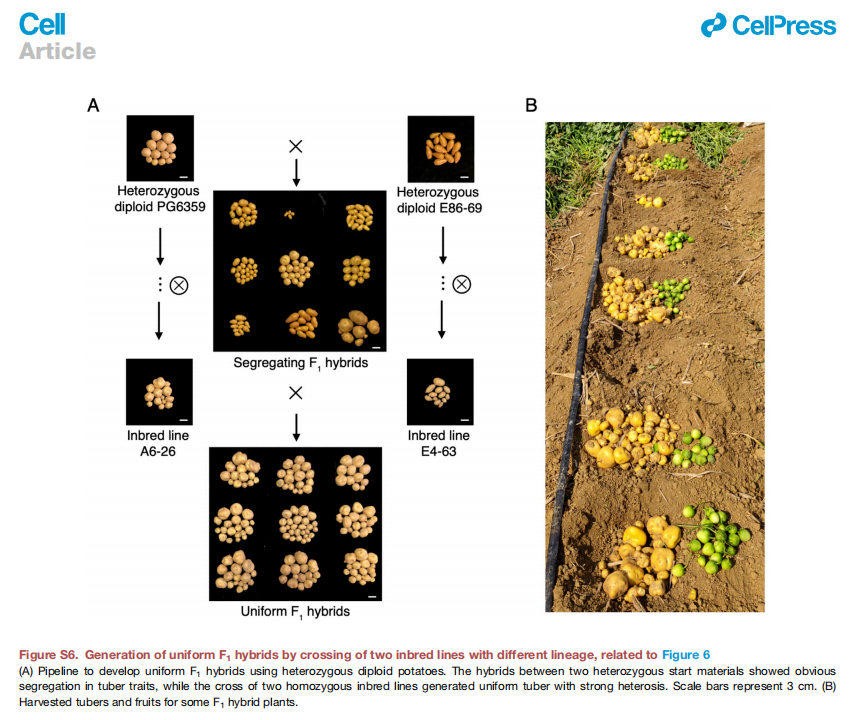
Summary
Reinventing potato from a clonally propagated tetraploid into a seed-propagated diploid, hybrid potato, is an important innovation in agriculture. Due to deleterious mutations, it has remained a challenge to develop highly homozygous inbred lines, a prerequisite to breed hybrid potato. Here, we employed genome design to develop a generation of pure and fertile potato lines and thereby the uniform, vigorous F1s. The metrics we applied in genome design included the percentage of genome homozygosity and the number of deleterious mutations in the starting material, the number of segregation distortions in the S1 population, the haplotype information to infer the break of tight linkage between beneficial and deleterious alleles, and the genome complementarity of the parental lines. This study transforms potato breeding from a slow, non-accumulative mode into a fast-iterative one, thereby potentiating a broad spectrum of benefits to farmers and consumers.
Highlights
•
Hybrid potato breeding requires a deep understanding of the potato genome
•
Genetic analysis facilitates purging of deleterious mutations
•
Breaking tight linkage of deleterious mutations is required to develop elite lines
•
Crossing of inbred lines from different lineages generated vigorous F1 hybrids
为了解决马铃薯产业面临的育种周期长和薯块繁殖成本高的问题,黄三文研究团队联合云南师范大学等国内外优势单位发起了“优薯计划”,运用“基因组设计”的理论和方法体系培育杂交马铃薯,用二倍体育种替代四倍体育种,并用杂交种子繁殖替代薯块繁殖。
在前期克服了自交不亲和和解析自交衰退的遗传机制的基础上,黄三文团队利用基因组大数据进行育种决策,建立了杂交马铃薯基因组设计育种流程,包括四个环节:(1)用于培育自交系的起始材料的选择,选择的标准是起始材料的基因组杂合度较低和有害突变数目较少;(2)起始材料自交群体的遗传解析,主要是根据全基因组偏分离分析和表型评价,确定大效应有害等位基因和优良等位基因在基因组中的分布;(3)自交系的选育,根据前景和背景选择淘汰大效应有害突变、聚合优良等位基因,尤其是要打破大效应有害突变和优良等位基因之间的连锁;(4)杂交种的选育,根据基因组测序的结果,选择基因组互补性较高的自交系进行杂交,获得杂种优势显著的杂交种。
利用该策略,该团队已经培育出第一代高纯合度(>99%)自交系和杂交品系“优薯1号”。小区试验显示“优薯1号”的产量接近3吨/亩,具有显著的产量杂种优势,同时还具有高干物质含量和高类萝卜素含量的特点,蒸煮品质佳。
“优薯1号”的成功选育证明了杂交马铃薯育种的可行性,使马铃薯遗传改良进入了快速迭代的轨道。
黄三文为该论文的通讯作者,张春芝为第一作者,此外中国农业科学院深圳农业基因组研究所(岭南现代农业科学与技术广东省实验室深圳分中心)和云南师范大学多位科研人员也为该研究做出了重要贡献。该研究得到了农业农村部、深圳市、中国农科院科技创新工程的资助。
论文链接:https://doi.org/10.1016/j.cell.2021.06.006
![]() 1-s2.0-S0092867421007078-main.pdf
1-s2.0-S0092867421007078-main.pdf
https://blog.sciencenet.cn/blog-454141-1292718.html
上一篇:期刊上关于CO2的有趣图片
下一篇:2021年上半年云南师范大学在web of science论文情况一览